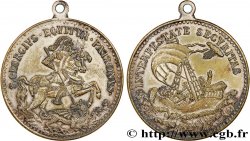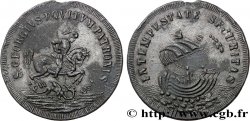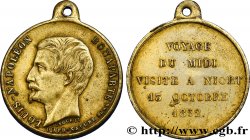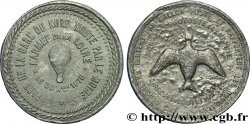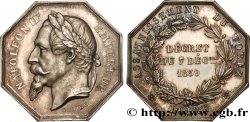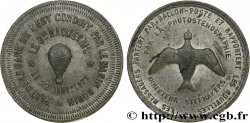E-auction 137-77840 - fjt_302212 - SOLDIER'S MEDAL XVIIIe siècle n.d.
You must signin and be an approved bidder to bid, LOGIN TO BID. Accounts are subject to approval and the approval process takes place within 48 hours. Do not wait until the day a sale closes to register. Clicking on « bid » constitutes acceptance of the terms of use of cgb.fr private e-auctions.
Bids must be placed in whole Euro amounts only. The sale will start closing at the time stated on the item description; any bids received at the site after the closing time will not be executed. Transmission times may vary and bids could be rejected if you wait until the last second. For further information ckeck the E-auctions F.A.Q.
NO BUYER'S FEE.
NO BUYER'S FEE.
| Estimate : | 38 € |
| Price : | 9 € |
| Maximum bid : | 13 € |
| End of the sale : | 30 November 2015 19:06:00 |
| bidders : | 3 bidders |
Type : XVIIIe siècle
Date: n.d.
Metal : brass
Diameter : 29,5 mm
Orientation dies : 12 h.
Edge : lisse
Rarity : R1
Coments on the condition:
Bon style
Obverse
Obverse legend : S: GEORGIVS. EQVITVM. PATRONVS..
Obverse description : Saint Georges terrassant le dragon.
Obverse translation : (Saint Georges, patron des chevaliers).
Reverse
Reverse legend : IN. TEMPESTATE. SECVRITAS.
Reverse description : Navire à droite dans la tempête, à l’intérieur Saint Jacques rayonnant.
Reverse translation : (En sécurité dans la tempête).
Commentary
Cette médaille était destinée à la protection de celui qui l’emmenait avec lui lors d’un voyage ou d’un pèlerinage. Intéressant témoignage historique.
Du temps ou ni train, ni voiture ni avion n’existaient, on ne pouvait voyager que de deux manières que protègent les deux côtés de ce jeton médaille. Par Saint Georges, patron des chevaliers, c’est le voyage à cheval qui est protégé, et par Saint Jacques, grand navigateur, protecteur des navires, c’est le voyage maritime.
On pourrait considérer cette médaille comme l’équivalent pré-révolutionnaire des médailles de Saint Christophe que l’on trouve parfois dans les taxis et qui protègent les conducteurs et passagers. Aux styles, on peut penser qu’elle fut fabriquée entre le XVIe et le tout début du XXe siècle ce qui fait une longévité impressionnante !
Saint Georges était le protecteur des voyageurs et des pèlerins, notamment de ceux qui se rendaient vers Saint-Jacques de Compostelle. Le récit légendaire fait de lui un officier, chrétien, de l’armée romaine. Vers 300 de notre ère, en Libye, un dragon terrorise les habitants d’une ville (Silène ?). Pour se garantir de sa mortelle haleine, les habitants devaient lui apporter chaque jour deux brebis à dévorer, mais il advint rapidement que les brebis vinrent à manquer et que l'on fut obligé de lui donner d'abord les garçons, puis les filles. Un jour, il ne resta plus que la fille du roi. Georges qui passait par là et la voyant pleurer, lui demanda ce qu'elle avait. Pendant qu'ils parlaient, le dragon s'approcha. Georges saute de son cheval, recommande son âme à Dieu, et court sur le dragon qu'il perce de sa lance. Après ce miracle, La ville se convertit au christianisme.
This medal was intended for the protection of those who took it with them on a journey or pilgrimage.. Interesting historical testimony.
In the days when trains, cars and planes did not exist, there were only two ways to travel, which are protected on both sides of this medal token.. By Saint George, patron of knights, it is horse travel that is protected, and by Saint James, great navigator, protector of ships, it is sea travel..
This medal could be considered the pre-revolutionary equivalent of the Saint Christopher medals sometimes found in taxis, which protect drivers and passengers.. From the styles, we can think that it was made between the 16th and the very beginning of the 20th century, which makes for an impressive longevity! Saint George was the protector of travelers and pilgrims, especially those who were going to Santiago de Compostela.. The legendary story makes him a Christian officer of the Roman army. Around 300 AD, in Libya, a dragon terrorized the inhabitants of a city (Silenus?). To protect themselves from his deadly breath, the inhabitants had to bring him two sheep every day to devour, but it soon happened that the sheep ran out and they were forced to give him first the boys, then the girls.. One day, only the king's daughter remained. Georges, who was passing by and saw her crying, asked her what was wrong.. As they were talking, the dragon approached. George jumps from his horse, commends his soul to God, and runs towards the dragon, which he pierces with his lance.. After this miracle, the city converted to Christianity.
Du temps ou ni train, ni voiture ni avion n’existaient, on ne pouvait voyager que de deux manières que protègent les deux côtés de ce jeton médaille. Par Saint Georges, patron des chevaliers, c’est le voyage à cheval qui est protégé, et par Saint Jacques, grand navigateur, protecteur des navires, c’est le voyage maritime.
On pourrait considérer cette médaille comme l’équivalent pré-révolutionnaire des médailles de Saint Christophe que l’on trouve parfois dans les taxis et qui protègent les conducteurs et passagers. Aux styles, on peut penser qu’elle fut fabriquée entre le XVIe et le tout début du XXe siècle ce qui fait une longévité impressionnante !
Saint Georges était le protecteur des voyageurs et des pèlerins, notamment de ceux qui se rendaient vers Saint-Jacques de Compostelle. Le récit légendaire fait de lui un officier, chrétien, de l’armée romaine. Vers 300 de notre ère, en Libye, un dragon terrorise les habitants d’une ville (Silène ?). Pour se garantir de sa mortelle haleine, les habitants devaient lui apporter chaque jour deux brebis à dévorer, mais il advint rapidement que les brebis vinrent à manquer et que l'on fut obligé de lui donner d'abord les garçons, puis les filles. Un jour, il ne resta plus que la fille du roi. Georges qui passait par là et la voyant pleurer, lui demanda ce qu'elle avait. Pendant qu'ils parlaient, le dragon s'approcha. Georges saute de son cheval, recommande son âme à Dieu, et court sur le dragon qu'il perce de sa lance. Après ce miracle, La ville se convertit au christianisme.
This medal was intended for the protection of those who took it with them on a journey or pilgrimage.. Interesting historical testimony.
In the days when trains, cars and planes did not exist, there were only two ways to travel, which are protected on both sides of this medal token.. By Saint George, patron of knights, it is horse travel that is protected, and by Saint James, great navigator, protector of ships, it is sea travel..
This medal could be considered the pre-revolutionary equivalent of the Saint Christopher medals sometimes found in taxis, which protect drivers and passengers.. From the styles, we can think that it was made between the 16th and the very beginning of the 20th century, which makes for an impressive longevity! Saint George was the protector of travelers and pilgrims, especially those who were going to Santiago de Compostela.. The legendary story makes him a Christian officer of the Roman army. Around 300 AD, in Libya, a dragon terrorized the inhabitants of a city (Silenus?). To protect themselves from his deadly breath, the inhabitants had to bring him two sheep every day to devour, but it soon happened that the sheep ran out and they were forced to give him first the boys, then the girls.. One day, only the king's daughter remained. Georges, who was passing by and saw her crying, asked her what was wrong.. As they were talking, the dragon approached. George jumps from his horse, commends his soul to God, and runs towards the dragon, which he pierces with his lance.. After this miracle, the city converted to Christianity.







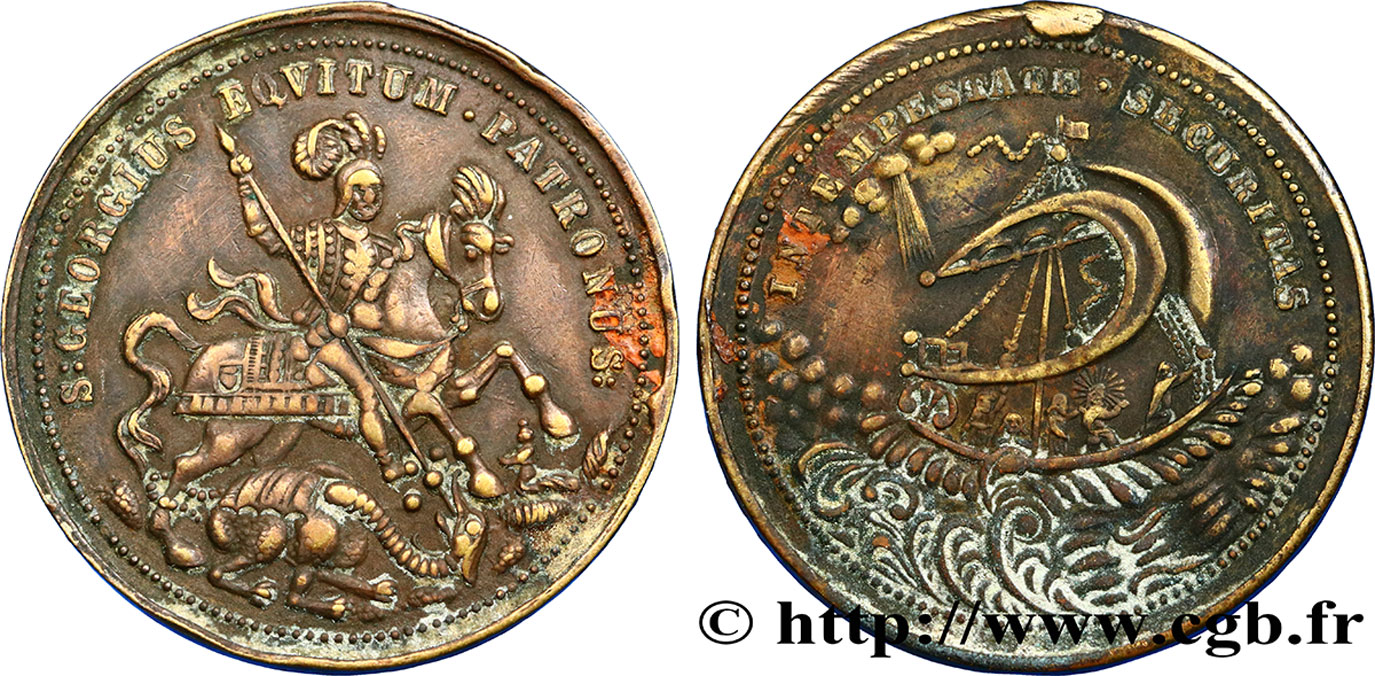
 Report a mistake
Report a mistake Print the page
Print the page Share my selection
Share my selection Ask a question
Ask a question Consign / sell
Consign / sell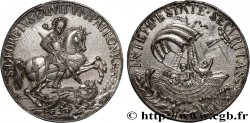
 Full data
Full data